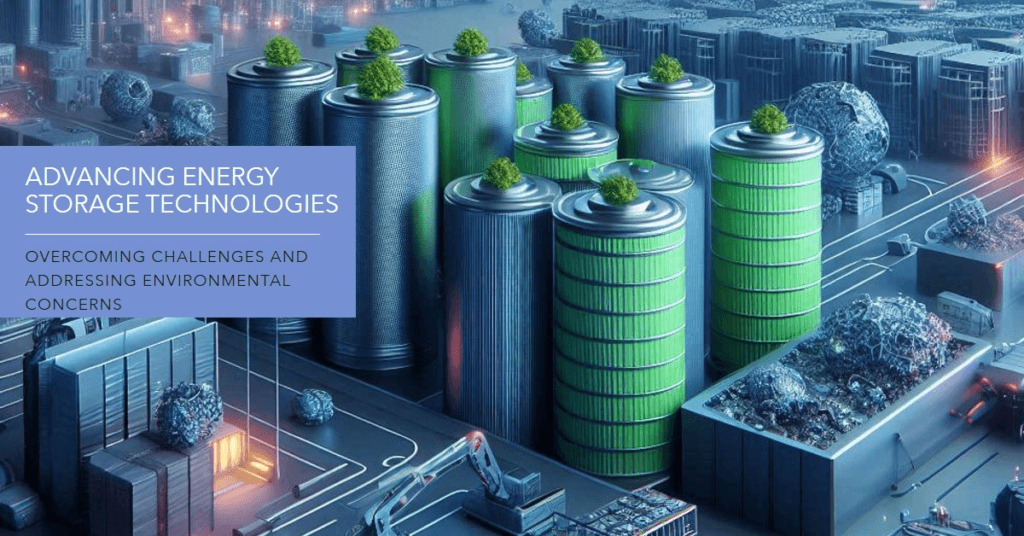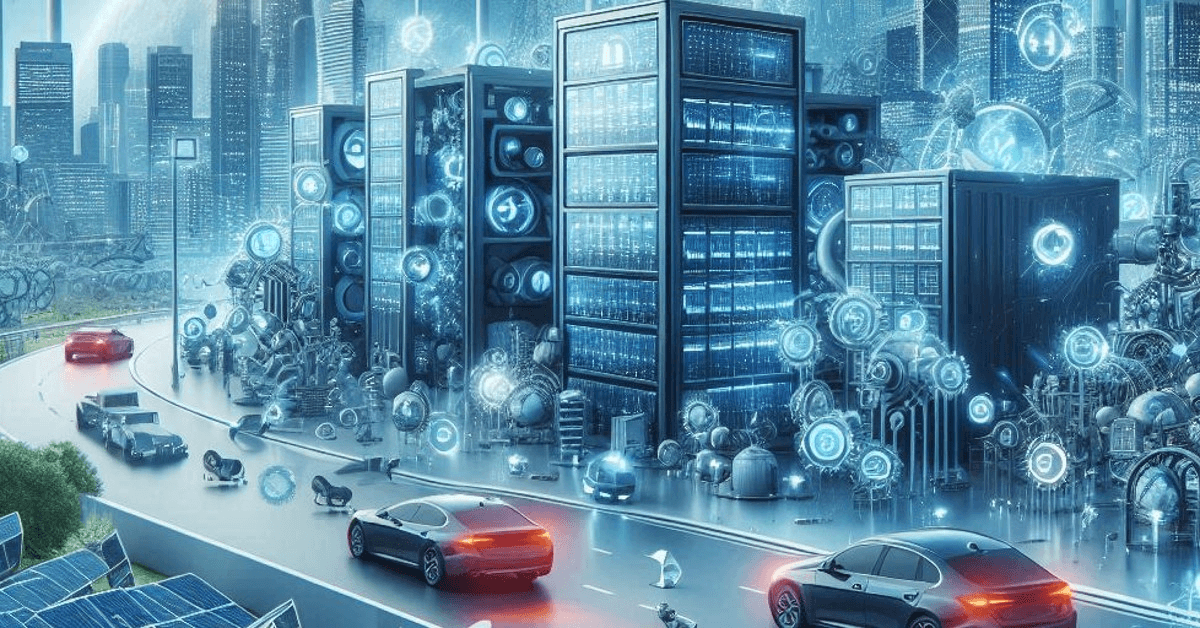As the world accelerates its transition to renewable energy, the role of energy storage technologies has become increasingly critical. Energy storage innovations / systems (ESS) enable the effective integration of renewable energy sources like solar and wind into the power grid, addressing issues related to intermittency and ensuring a reliable supply of electricity. This article explores the latest developments in energy storage technologies, including advanced batteries and alternative storage systems, and examines their impact on renewable energy adoption.
The Importance of Energy Storage in Renewable Energy
Renewable energy sources, while sustainable and environmentally friendly, are often intermittent. Solar power is only available during the day, and wind energy fluctuates based on weather conditions. Energy storage systems play a vital role in overcoming these challenges by storing excess energy produced during peak generation times and releasing it when demand is high or generation is low. This capability not only stabilizes the power grid but also enhances the reliability and efficiency of renewable energy systems.
Latest Developments in Energy Storage Technologies
Lithium-Ion Batteries
Lithium-ion batteries continue to dominate the energy storage market due to their high energy density, efficiency, and declining costs. Recent innovations have focused on improving battery lifespan, safety, and charging speed. For instance, researchers are exploring the use of solid-state electrolytes to replace liquid electrolytes, which could lead to safer and more durable batteries.
Companies like Tesla and LG Chem are leading the charge in scaling up lithium-ion battery production for both grid-scale applications and electric vehicles (EVs). Tesla’s Megapack, a large-scale battery storage solution, is being deployed in projects worldwide, helping to stabilize the grid and support the integration of renewable energy.
For more information on renewable energy trends and their impact on the environment, check out our article on renewable energy trends.
Flow Batteries
Flow batteries are emerging as a promising alternative to lithium-ion batteries, especially for large-scale energy storage applications. These batteries use liquid electrolytes that flow through a cell stack to store and release energy. The key advantage of flow batteries is their ability to scale up easily by increasing the size of the electrolyte tanks, making them ideal for grid storage.
Vanadium redox flow batteries (VRFBs) are one of the most developed types of flow batteries. They offer long cycle life, low degradation, and the ability to discharge for extended periods. Companies like Invinity Energy Systems are pioneering the deployment of VRFBs in renewable energy projects, providing reliable storage solutions that can operate for decades.
Solid-State Batteries
Solid-state batteries represent the next frontier in energy storage technology. These batteries replace the liquid or gel electrolyte found in traditional batteries with a solid electrolyte, which enhances energy density, safety, and durability. Solid-state batteries are particularly promising for electric vehicles, as they could significantly increase driving range and reduce charging times.
Although still in the developmental stage, solid-state batteries have attracted significant investment from major automakers and tech companies. For example, Toyota and QuantumScape are working on commercializing solid-state batteries, with the potential to revolutionize both the EV market and stationary energy storage systems.
For a deeper dive into the future of solid-state batteries, read this comprehensive article on solid-state battery technology.
Compressed Air Energy Storage (CAES)
Compressed Air Energy Storage (CAES) is a technology that stores energy by compressing air in underground caverns or tanks and releasing it to drive turbines when electricity is needed. CAES systems can store large amounts of energy for long periods, making them suitable for balancing supply and demand in the grid.
Recent advancements in CAES technology include the development of adiabatic CAES, which captures and stores the heat generated during air compression, improving overall efficiency. Projects like the Adele project in Germany are exploring the potential of adiabatic CAES to provide long-duration energy storage at a lower cost than traditional batteries.
Hydrogen Storage
Hydrogen is increasingly being recognized as a versatile energy carrier with the potential to store and transport renewable energy. Electrolysis, powered by renewable energy, can split water into hydrogen and oxygen, producing green hydrogen that can be stored and later used to generate electricity through fuel cells or combustion.
Hydrogen storage offers a unique advantage by providing both short-term and long-term energy storage solutions. It also enables the decarbonization of sectors like heavy industry and transportation, where direct electrification is challenging. Countries like Japan and Germany are investing heavily in hydrogen infrastructure, positioning hydrogen as a key component of their renewable energy strategies.
To understand how hydrogen is transforming renewable energy, explore our article on hydrogen in renewable energy.
Impact of Energy Storage on Renewable Energy Adoption
Grid Stability and Reliability
Energy storage systems enhance grid stability by smoothing out fluctuations in power generation and demand. This capability is crucial for integrating high levels of renewable energy into the grid, as it prevents blackouts and ensures a consistent power supply. As more renewable energy projects incorporate storage solutions, the grid becomes more resilient to disruptions caused by variable energy sources.
Increased Renewable Energy Penetration
The deployment of advanced energy storage technologies allows for higher penetration of renewable energy in the energy mix. By storing excess renewable energy and dispatching it when needed, storage systems reduce the reliance on fossil fuels for baseload power, accelerating the transition to a low-carbon energy system.
Cost Reduction and Economic Viability
Energy storage systems are becoming more cost-effective as technology advances and economies of scale are achieved. The declining costs of batteries, coupled with the increasing efficiency of storage systems, make renewable energy projects more economically viable. This trend is driving investment in renewable energy, particularly in regions where energy storage can provide a competitive advantage.
Empowering Decentralized Energy Systems
Energy storage is enabling the growth of decentralized energy systems, where communities and businesses generate, store, and manage their own renewable energy. These systems, often referred to as microgrids, offer energy independence and resilience, particularly in remote or underserved areas. The ability to store locally generated renewable energy empowers consumers and reduces the burden on centralized power grids.
For more on the rise of decentralized energy systems, check out this insightful article on microgrids and their role in energy resilience.
Challenges and Future Outlook

While energy storage technologies are advancing rapidly, challenges remain. These include the need for further cost reductions, the development of scalable and sustainable materials, and the creation of supportive regulatory frameworks. Additionally, the disposal and recycling of battery materials pose environmental concerns that need to be addressed.
Looking ahead, the future of energy storage is promising. Continued innovation, combined with increased investment and supportive policies, will drive the widespread adoption of energy storage systems. As these technologies mature, they will play a pivotal role in achieving global renewable energy goals and combating climate change.
Conclusion
Energy storage innovations are at the forefront of the renewable energy revolution. From advanced batteries to alternative storage systems, these technologies are enabling the reliable and efficient use of renewable energy on a global scale. As energy storage continues to evolve, it will unlock new possibilities for sustainable energy systems, empowering the transition to a cleaner, greener future.










